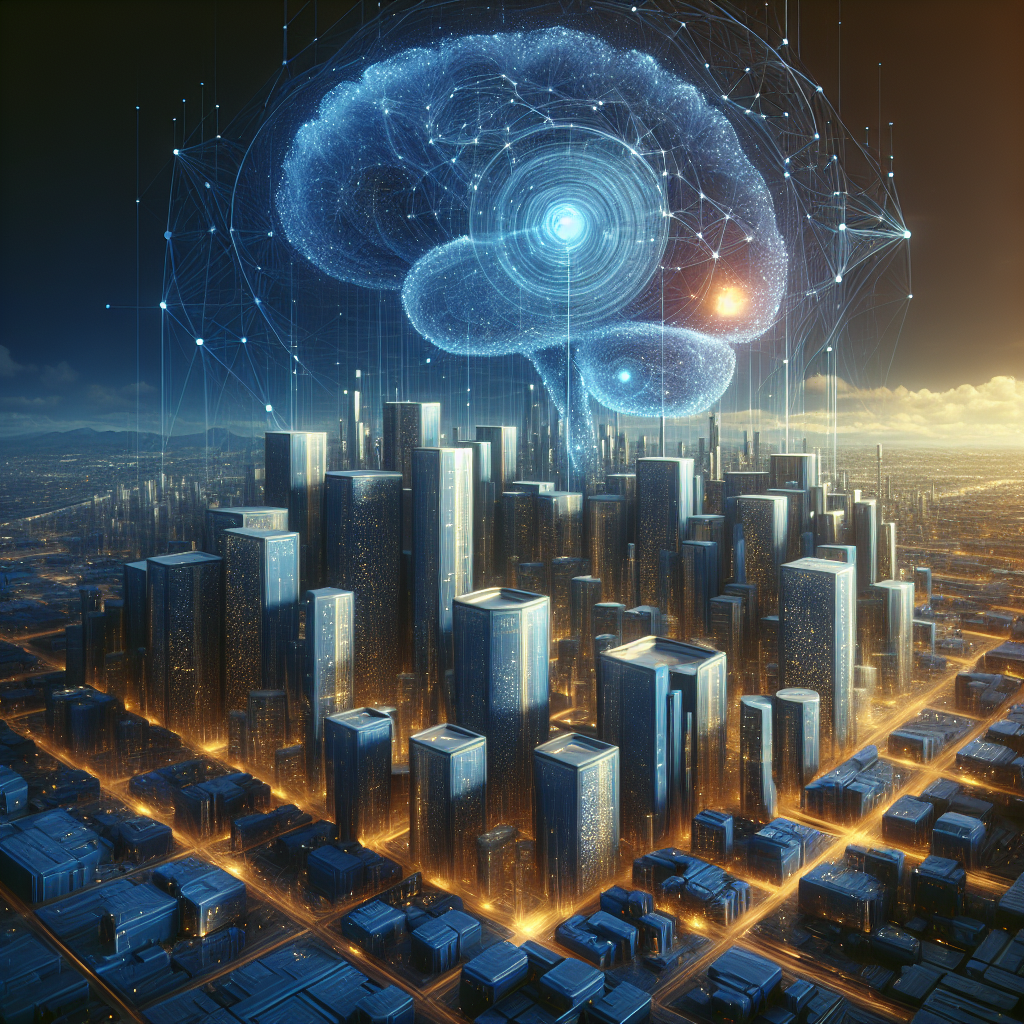The Role of AI in Adaptive and Responsive Building Systems
As technology continues to advance, the integration of artificial intelligence (AI) into various industries has become increasingly prevalent. One such industry that is benefitting greatly from AI is the construction and building sector. AI is being used to create adaptive and responsive building systems that can enhance the functionality, efficiency, and sustainability of buildings. In this article, we will explore the role of AI in adaptive and responsive building systems and how it is revolutionizing the way buildings are designed, constructed, and operated.
What are Adaptive and Responsive Building Systems?
Adaptive and responsive building systems refer to structures that are capable of modifying their behavior or responding to changes in their environment. These systems use sensors, actuators, and AI algorithms to analyze data and make real-time adjustments to optimize performance. This can include adjusting lighting levels, heating and cooling systems, ventilation, and even the layout of the building itself.
The goal of adaptive and responsive building systems is to create buildings that can adapt to changing environmental conditions, user preferences, and energy demands. By using AI, buildings can become more efficient, comfortable, and sustainable while reducing operating costs and environmental impact.
How Does AI Play a Role in Adaptive and Responsive Building Systems?
AI plays a critical role in adaptive and responsive building systems by enabling buildings to learn from data, predict future events, and make informed decisions in real-time. AI algorithms can analyze large amounts of data collected from sensors throughout the building to identify patterns, trends, and anomalies. This data can then be used to optimize building operations, improve energy efficiency, and enhance occupant comfort.
For example, AI can be used to predict when a building will experience peak energy demand based on historical data and weather forecasts. The building’s systems can then adjust in advance to minimize energy consumption during peak times. AI can also be used to analyze occupancy patterns and adjust lighting, heating, and cooling systems accordingly to optimize comfort and energy usage.
In addition, AI can enable buildings to respond dynamically to changes in their environment. For example, sensors can detect changes in temperature, humidity, and air quality and adjust HVAC systems accordingly. AI algorithms can also analyze traffic patterns, weather conditions, and other external factors to optimize building operations and enhance occupant comfort.
Overall, AI enables adaptive and responsive building systems to continuously learn, adapt, and optimize performance based on real-time data and user feedback. This can result in buildings that are more energy-efficient, comfortable, and sustainable while providing a better experience for occupants.
Benefits of AI in Adaptive and Responsive Building Systems
There are several key benefits of using AI in adaptive and responsive building systems, including:
– Improved energy efficiency: AI can optimize building operations to minimize energy consumption while maintaining occupant comfort. This can result in significant cost savings and reduced environmental impact.
– Enhanced occupant comfort: By analyzing data on occupancy patterns, preferences, and behavior, AI can adjust lighting, heating, cooling, and other systems to create a more comfortable and productive environment for occupants.
– Increased sustainability: AI can help buildings reduce their carbon footprint by optimizing energy usage, reducing waste, and improving overall efficiency.
– Reduced operating costs: By optimizing building operations and maintenance, AI can help reduce operating costs and extend the lifespan of building systems.
– Real-time monitoring and control: AI enables buildings to monitor and control systems in real-time, allowing for quick adjustments to changing conditions and events.
Overall, AI is revolutionizing the way buildings are designed, constructed, and operated by enabling adaptive and responsive building systems that are more efficient, sustainable, and comfortable for occupants.
FAQs
Q: How does AI improve energy efficiency in buildings?
A: AI can optimize building operations by analyzing data on energy usage, occupancy patterns, and environmental conditions. By adjusting lighting, heating, cooling, and other systems in real-time, AI can minimize energy consumption while maintaining occupant comfort.
Q: How can AI enhance occupant comfort in buildings?
A: AI can analyze data on occupancy patterns, preferences, and behavior to adjust building systems such as lighting, heating, cooling, and ventilation to create a more comfortable and productive environment for occupants.
Q: What are some examples of adaptive and responsive building systems?
A: Examples of adaptive and responsive building systems include smart HVAC systems that adjust based on occupancy and environmental conditions, lighting systems that adjust based on natural light levels, and building layouts that can be reconfigured based on user preferences.
Q: How does AI enable buildings to respond to changing environmental conditions?
A: AI algorithms can analyze data from sensors throughout the building to detect changes in temperature, humidity, air quality, and other factors. This data can then be used to adjust building systems in real-time to optimize performance and occupant comfort.
Q: What are the key benefits of using AI in adaptive and responsive building systems?
A: The key benefits of using AI in adaptive and responsive building systems include improved energy efficiency, enhanced occupant comfort, increased sustainability, reduced operating costs, and real-time monitoring and control.
In conclusion, AI is playing a crucial role in transforming the construction and building industry by enabling adaptive and responsive building systems that are more efficient, sustainable, and comfortable for occupants. By using AI to analyze data, predict future events, and make real-time adjustments, buildings can optimize performance, reduce energy consumption, and improve overall functionality. As technology continues to advance, the integration of AI into building systems will only continue to grow, revolutionizing the way buildings are designed, constructed, and operated.

